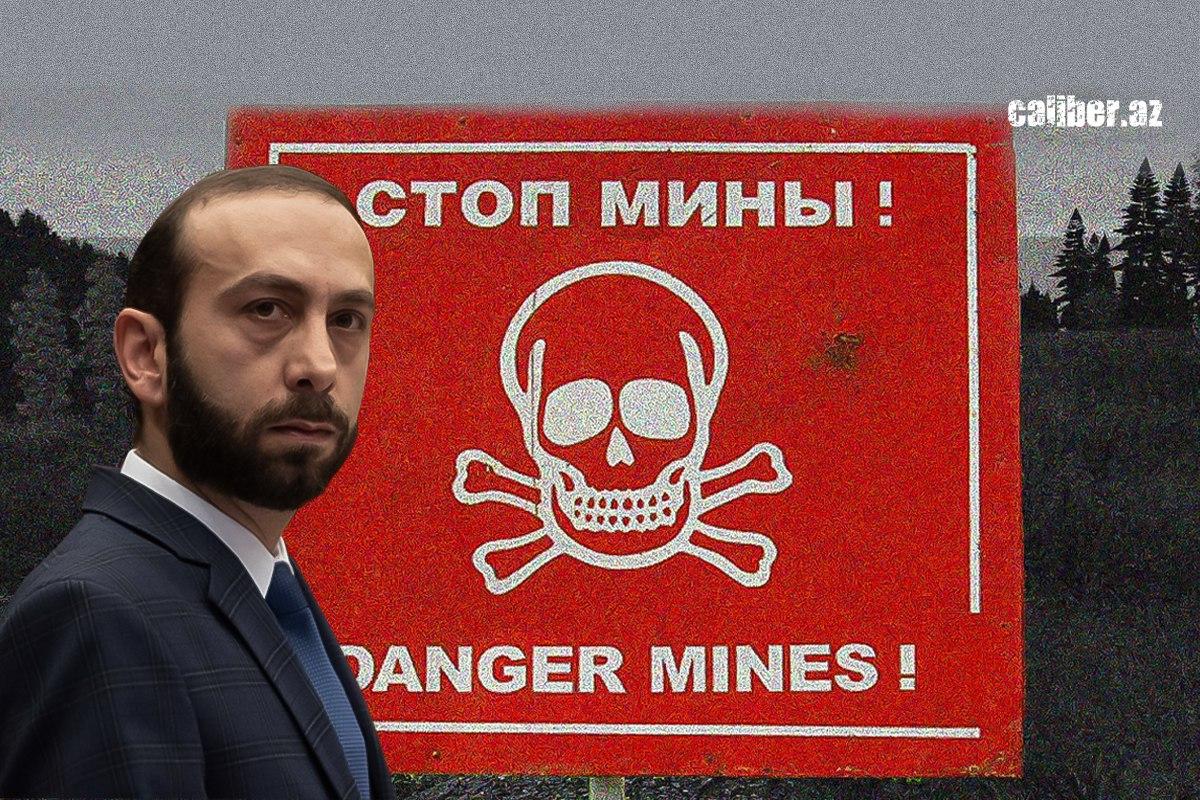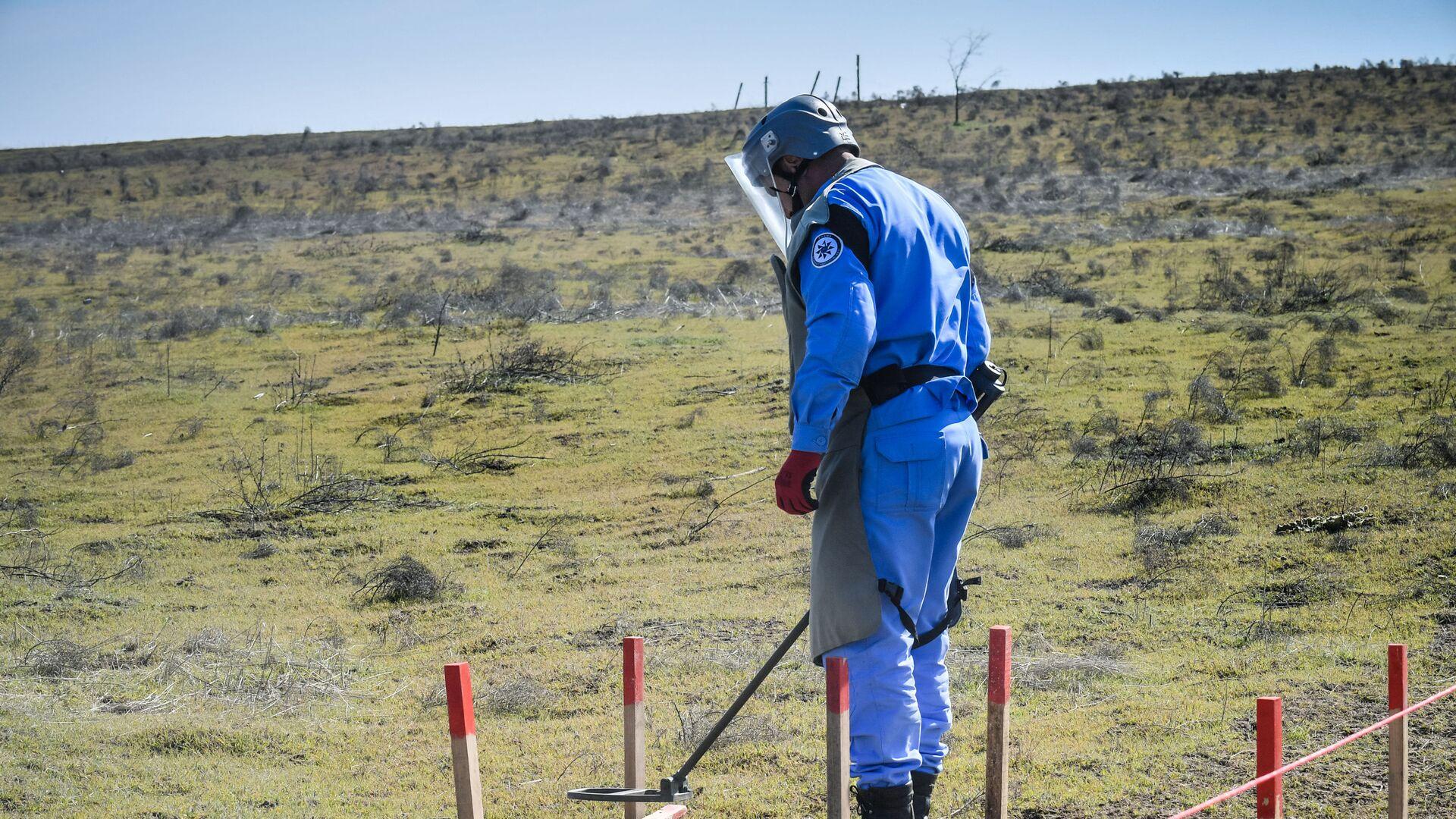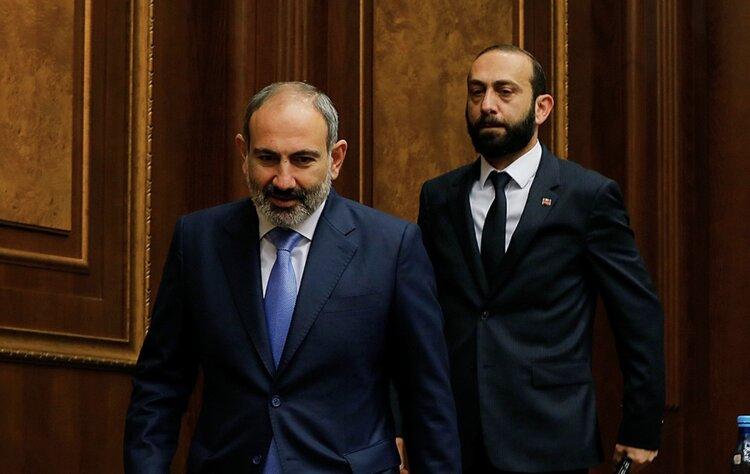Mountain of lies over the mountain of mines Yerevan backtracking on peace process
The news from Yerevan is hardly encouraging for the peace process between Azerbaijan and Armenia. At a meeting with journalists, Foreign Minister Ararat Mirzoyan made a number of statements. Among them were the following: "Azerbaijan wants to waive passport and customs regulations on this route (Zangezur corridor - ed.). This is unacceptable to us. We are ready to carry out certain simplifications, but we are not going to accept the logic of the corridor".
This was another attempt by Yerevan to deny its commitment to the ninth point of the November 10 tripartite declaration, stating in black and white the unhindered movement of citizens, transport and goods between the western regions of Azerbaijan and Nakhchivan. Mirzoyan also reiterated the need to find new allies for security, which, without any desire for peace, demonstrates the Armenian leadership's militaristic and possibly revanchist plans. Finally, the seemingly constructive information on the mine maps is confusing. This implies that Armenia may soon provide Azerbaijan with new mine data. The details, however, make one scratch head over it. "Work is underway to obtain new information on possible mined areas in Karabakh," Mirzoyan said, adding that the Armenian side is "trying to create new maps through surveys".

The author of this article is not an expert on mines and demining and admits that it is common practice to produce maps of minefields by survey. But how accurate can they be, when their predecessors were only 25% accurate? But something tells me that the majority of respondents will deliberately give false coordinates, given the "deferential" attitude of Armenians towards Azerbaijanis.
However, it seems that the maps (if they are given) will still be original, and therefore more or less accurate, and that mentioning the surveying method is just a ruse to cover their own lies. After all, Yerevan long claimed to have handed over all the maps they had.

The fact that new mines were added to those laid before 8 November 2020 makes the situation worse. From that date, 548 posts were set up along the 480-kilometre line of contact until the withdrawal of the Armenian military from Karabakh in September 2023. More than 500,000 mines have been planted in these areas. At the same time, Armenia bought weapons from India, France and Russia. Some of these were deployed in Karabakh.
Yerevan also long claimed that it has no military formations in Karabakh, but after the September 2023 anti-terror operation, the separatists themselves said that Armenian armed formations would leave Karabakh. Another lie.
We have repeatedly pointed out in our materials that, despite its statements recognising the territorial integrity of Azerbaijan, in its legal correspondence with international organisations and courts, Yerevan refers to Azerbaijani territories as "territories of Nagorno Karabagh under the control of Azerbaijan" and uses the name "Republic of Artsakh". The applications submitted to the European Court use Armenianised toponyms such as 'Kashatagh and Shahumian districts of the Republic of Artsakh'. The official website of the Armenian Ministry of Foreign Affairs still refers to "the President of the NKR", "the Government of the NKR" and "the Ministry of Foreign Affairs of the NKR".
Once again, we see that Yerevan's real goal after November 9, 2020, is buying time and strengthening military positions in Karabakh, building forts and checkpoints, and continuing planting mines - in short, increasing the resistance of the separatist regime. The ultimate goal was to prepare for the so-called "secession for salvation" scenario, as in the case of Kosovo. In other words, the Armenians were trying to deceive the world community at the same time as they were trying to lull Baku's vigilance by talking about peace. They were trying to gain time. It seems that they are doing the same now.

Baku has never been fooled about Armenia's plans. More precisely, it always has a scenario of Yerevan's banal lies in mind, and it always has an answer to this scenario. The fact that we never fully trusted Yerevan and always relied on our own strength and diplomacy is shown by all of Baku's actions in the three years following the victory in the 44-day war. This is how the Lachin checkpoint was established and the puppet regime in Karabakh was defeated. Yerevan's manoeuvrings merely reduce its credibility and lead the country into isolation.
Recently, the Armenian leadership has preferred not to burn its bridges completely, as if it is afraid that its game will lead the country to collapse. Here and now, Armenian top diplomat has noticed that direct communication exists not only between the administrations of the heads of state of Armenia and Azerbaijan. "It exists between the foreign ministries of the two countries and a number of agencies working on the ground. Exchanging proposals on the peace treaty or holding substantive discussions on this issue is done at the level of the Foreign Ministries," the Armenian minister said.
Well, let's live and see how important these channels really are for the Armenian people.








